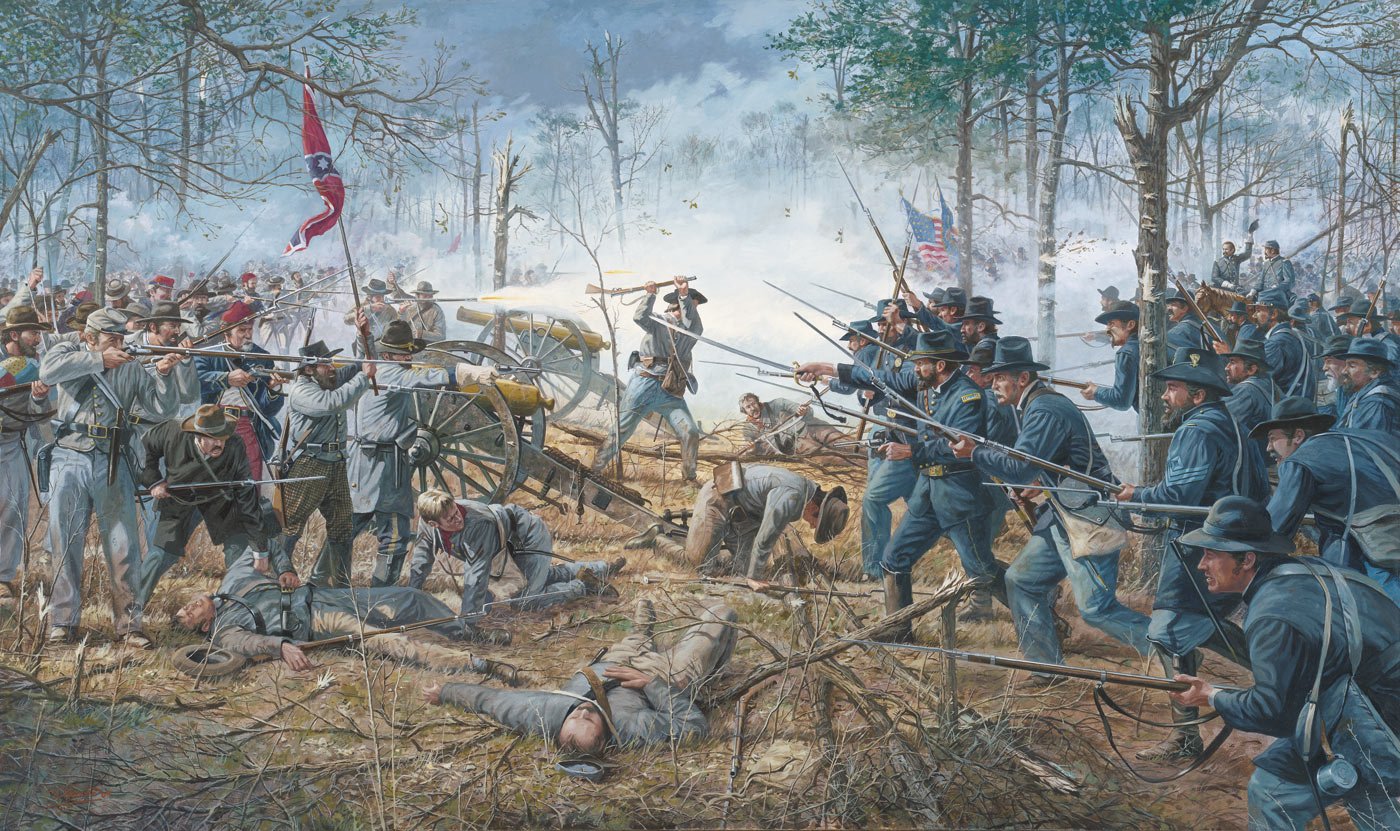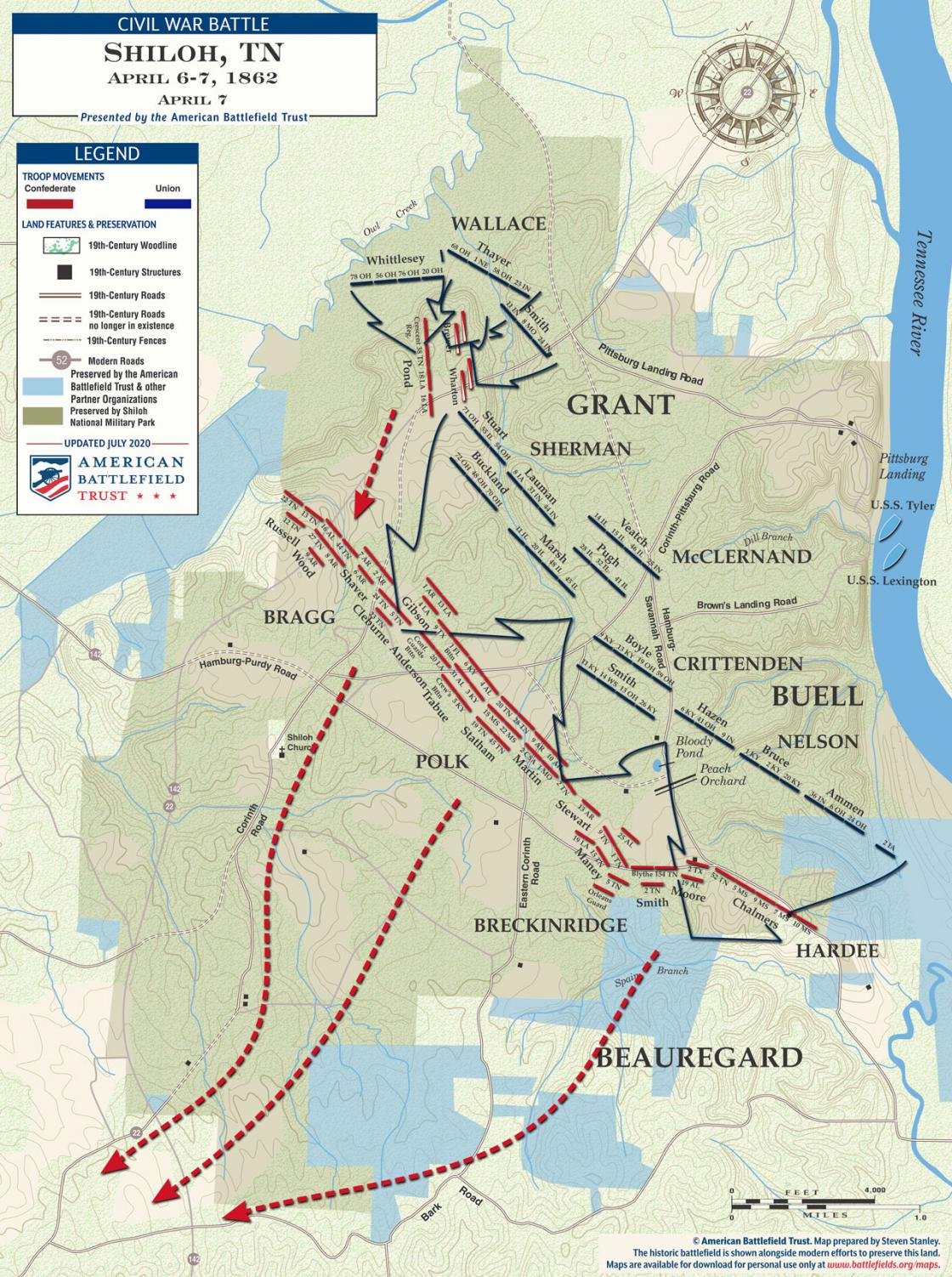Shiloh
After the Union victories at Fort Henry and Fort Donelson, Confederate General Albert Sidney Johnston withdrew from Kentucky and Tennessee. General Ulysses Grant pushed his troops towards Corinth, Mississippi, a vital railroad hub where Confederate troops and supplies passed.
Grant stopped at Pittsburg Landing to drill his troops and wait for support from General Buell’s Army of the Ohio. Johnston, hoping to hit Grant before his reinforcements could arrive, marched his troops from Corinth to just south of Pittsburg Landing.
On the morning of April 6th, 1862, Confederates swept into some of the Union camps and fighting began around Shiloh Church. The Union was caught unaware, but recovered quickly and took up defensive positions.
Fighting became thick and hectic in various areas, most notably in an oak forest later called the Hornet’s Nest. The Union forces continued to lose ground. However, General Johnston was shot in the leg and bled to death. Command of the Confederate forces fell to P.G.T. Beauregard, who, thinking that he had been victorious, recalled his troops. He was not aware that Buell’s forces had arrived overnight to reinforce Grant’s troops.
When morning broke on April 7th, the Union army outnumbered the Confederates by 30,000 men. Grant launched his assault early, surprising Beauregard and the disorganized Confederate forces. The Rebels were forced to fall back and regroup, but the Union army continued the attack.
The Confederates fell back a second time and attempted to make another stand, but Beauregard was forced to admit he was defeated and so ordered the retreat back to Corinth, Mississippi. Grant had won another difficult battle. All told the Confederate had 44,968 soldiers while the Union had 65,085 once Buell’s troops arrived. The losses were staggering. 13,047 casualties for the Union and 10,669 for the Confederates.
The Confederates were only able to escape due to Col. Nathan Bedford Forrest’s personal sacrifice by charging headfirst into enemy fire where he was shot at point blank range, but survived. The Union forces fled from Forrest’s offensive while the rest of the Confederates made their retreat to Corinth.
The loss of General Johnston was a huge blow to the Confederates. Morale for the South was considerably low after Shiloh. Despite being victorious, Grant was criticized for the great loss of life. President Lincoln ignored calls to replace Grant, saying that “I can’t spare this man, he fights.
The Battle of Shiloh helped to solidify the notion that the Civil War was not going to be a short war. The casualties brought home the toll this war would take on the people of the United States. Grant became convinced that the invasion of the South would be a grueling and long endeavor.
Works Cited
“Battle of Shiloh - Shiloh National Military Park (U.S.” National Park Service, https://www.nps.gov/shil/learn/historyculture/shiloh-history.htm. Accessed 23 November 2022.
“Battle of Shiloh | United States history | Britannica.” Encyclopedia Britannica, https://www.britannica.com/event/Battle-of-Shiloh. Accessed 23 November 2022.
“Shiloh Battle Facts and Summary.” American Battlefield Trust, https://www.battlefields.org/learn/civil-war/battles/shiloh. Accessed 23 November 2022.







